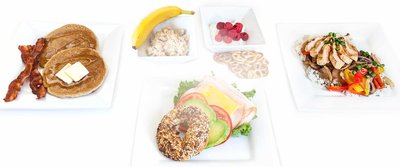
What Does 2,500 Calories Look Like?
Ever wondered what 2,500 calories looks like? Use this handy visual guide to see a day's worth of meals across 3 different macronutrient ratios!
Picture 2,500 calories. Do you have an image in your mind? Depending on the foods you prefer or whatever's easiest for you to visualize, you might imagine a small pile of fast-food hamburgers, a carton of ice cream, or a plate of fresh fruits and vegetables. In other words, what to put on your plate to achieve 2,500 calories can vary drastically in terms of quantity, quality, and macronutrient composition.
But if you believe that a calorie is a calorie is a calorie, then 2,500 of them should have the same impact on your body no matter what foods you eat, right?
Well, we're not so sure. You can eat 2,500 calories in a day, but how these calories are broken up into protein, carbs, and fat can have a big impact on your physique, performance, and general health.
To help you visualize what 2,500 calories looks like as actual food from different popular diet plans, we've created daily meal plans out of three common macronutrient ratios of protein to carbohydrates to fat: 40/40/20, 30/20/50, and 20/50/30.
The 40/40/20 ratio is the typical low-fat, high-protein bodybuilder diet many of us are accustomed to seeing. The 30/20/50 ratio is a relatively high-fat, low-carbohydrate diet. The 20/50/30 ratio represents what the typical American diet looks like.
The calories will be the same in each daily diet, but the food on the plates is going to look vastly different. Using these photos, you'll be able to distinguish what type of macro ratio you'd like to utilize according to your goals and tastes!
Build Your Own Nutrition Plan
To figure out your own caloric needs, how those calories get broken down into macro ratios, and how many grams of each macronutrient you should eat per day, you'll have to do a little math. It's not hard, though. If you passed fifth grade, you should be fine.
Use our calorie calculator to determine your total daily caloric intake.
If you have a desk job, we suggest that you estimate light or moderate activity on your activity level, even if you hit the gym hard 5-6 days per week.
Once you have your caloric intake figured out, it's time to choose a macro ratio. In general, the 40/40/20 choice works for most people, but if you like a little more fat in your diet, feel free to change the numbers depending on your tastes.
Once you know your macro ratio, it's time to put those percents to good use and turn them into actual calories. For example, let's say you're going to eat 2,500 calories in a 40/40/20 split. In that case, 40 percent of your total (1,000 calories) would come from protein; 40 percent (1,000 calories) would come from carbs; and 20 percent (500 calories) would be from fat.
When you know how many calories you should eat from each subgroup, divide them by the calories in 1 gram of each macro. A gram of carbohydrate has 4 calories, one gram of protein has 4, and one gram of fat has 9.
So, continuing with 2,500 calories broken down into 40/40/20, 1,000 calories from protein would be 250 grams; 1,000 calories from carbs would be 250 grams; and 500 calories from fat would be 55 grams. Every day, you'll aim to eat 250 grams of protein, 250 grams of carbs, and 55 grams of fat. Voila!
Once you know those numbers, all you have to do is fill them in with actual food like we've done here. Use this handy visual guide to build your own perfect diet based on your preferred macronutrient ratio!
2,500 Calories in Five Meals
Breakfast
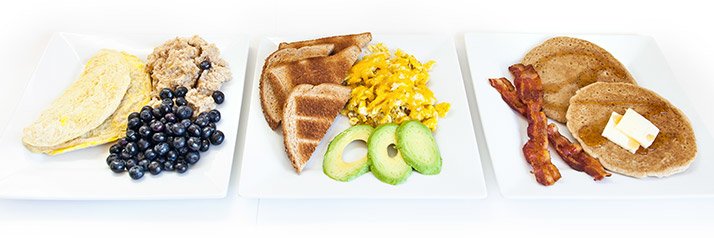
40/40/20
1 cup egg whites
1 cup oats
1 cup blueberries
2 tbsp pure maple syrup
30/20/50
1 slice cheddar cheese
2 slices whole-wheat toast
1/4 cup sliced avocado
20/50/30
2 slices bacon
2 pats butter
3 tbsp pure maple syrup
Calories 595
Fat 15 g
Carbs 75 g
Protein 40 g
Calories 716
Fat 44 g
Carbs 39 g
Protein 41 g
Calories 673
Fat 29.4 g
Carbs 85 g
Protein 17 g
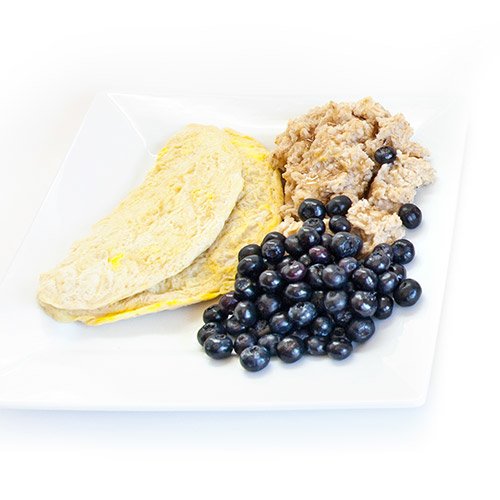
40/40/20
2 whole eggs1 cup egg whites
1 cup oats
1 cup blueberries
2 tbsp pure maple syrup
Total:
Calories 595
Fat 15 g
Carbs 75 g
Protein 40 g
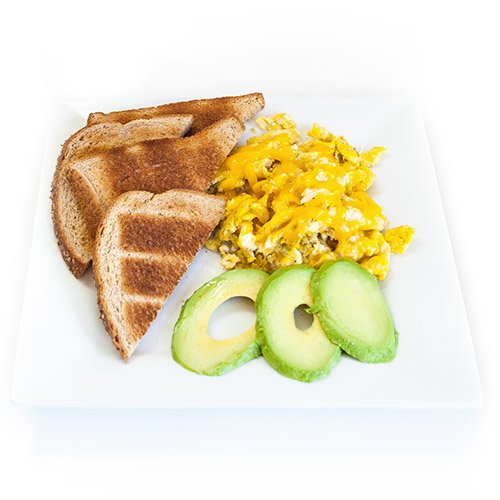
30/20/50
4 whole eggs, scrambled1 slice cheddar cheese
2 slices whole-wheat toast
1/4 cup sliced avocado
Total:
Calories 716
Fat 44 g
Carbs 39 g
Protein 41 g
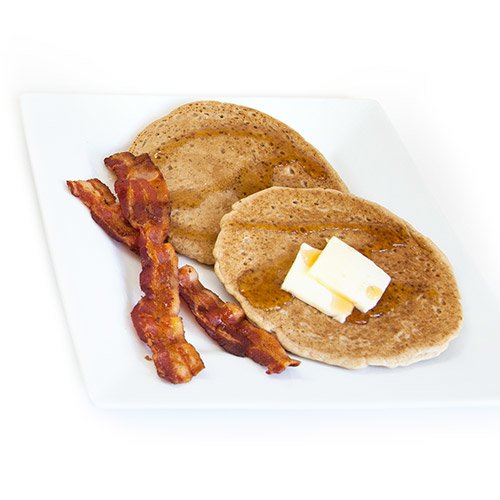
20/50/30
2 6-inch buttermilk pancakes2 slices bacon
2 pat butter
3 tbsp pure maple syrup
Total:
Calories 673
Fat 29.4 g
Carbs 85 g
Protein 17 g
Snack
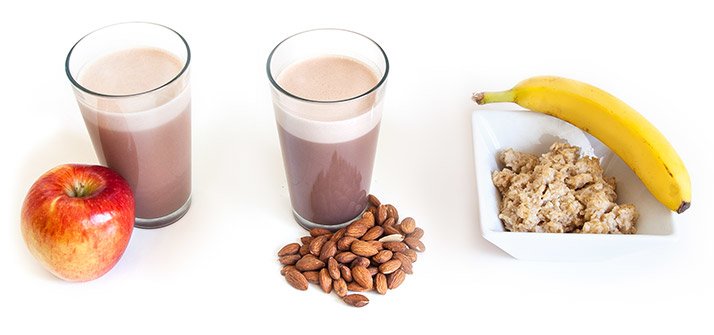
40/40/20
1 medium apple
30/20/50
1/3 cup raw almonds
20/50/30
1 cup oatmeal
Calories 376
Fat 4 g
Carbs 35 g
Protein 50 g
Calories 337.4
Fat 19 g
Carbs 11 g
Protein 30.6 g
Calories 286
Fat 4 g
Carbs 55.1 g
Protein 7.5 g
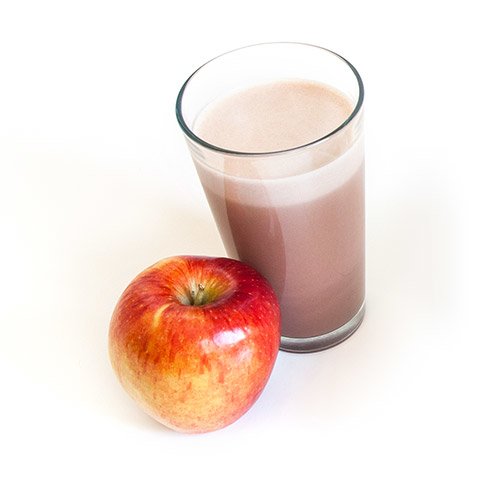
40/40/20
2 scoops whey protein isolate1 medium apple
Total:
Calories 376
Fat 4 g
Carbs 35 g
Protein 50 g
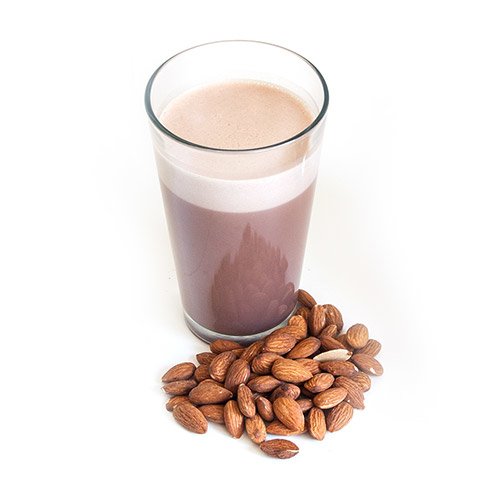
30/20/50
1 scoop whey protein1/3 cup raw almonds
Total:
Calories 337.4
Fat 19 g
Carbs 11 g
Protein 30.6 g
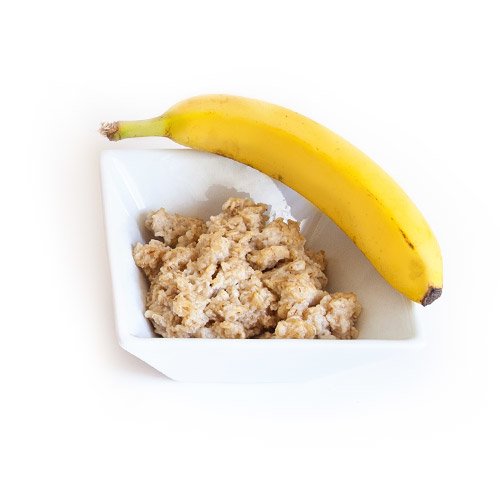
20/50/30
1 medium banana1 cup oatmeal
Total:
Calories 286
Fat 4 g
Carbs 55.1 g
Protein 7.5 g
The Power of Protein
While you probably already know this, protein is easily one of the most important macronutrients when it comes to building muscle, if not the most important. Protein is responsible for tissue growth and repair, so it's integral to muscle recovery and growth.
If you don't already have a protein supplement in your cupboard, consider buying one now to integrate into your meal plans and to drink after your weightlifting workouts. Protein supplements like whey are convenient, low-calorie, fast-digesting, and easy to fit into any configuration of 2,500 calories.
Lunch
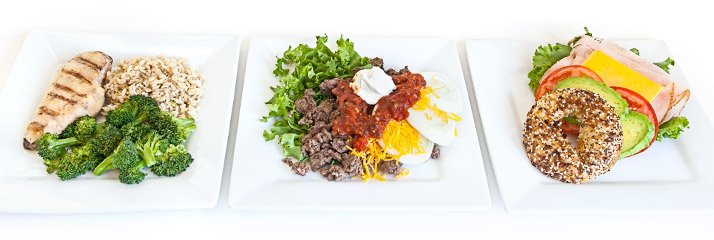
40/40/20
1 cup chopped broccoli, steamed
1 cup long-grain brown rice
30/20/50
1 tbsp extra-virgin olive oil
1/2 cup chopped onion
1 cup shredded lettuce
2-3 tbsp fresh tomato salsa
1/4 cup shredded cheddar
1 tbsp sour cream
20/50/30
4 oz. sliced turkey
2 slices tomato
1 lettuce leaf
1 slice cheddar cheese
1 tsp mustard
2 slices avocado
Calories: 419
Fat 6.5 g
Carbs 45 g
Protein 45 g
Calories 591
Fat 36.6 g
Carbs 14.5 g
Protein 51 g
Calories 632
Fat 20 g
Carbs 70.4 g
Protein 42.5 g
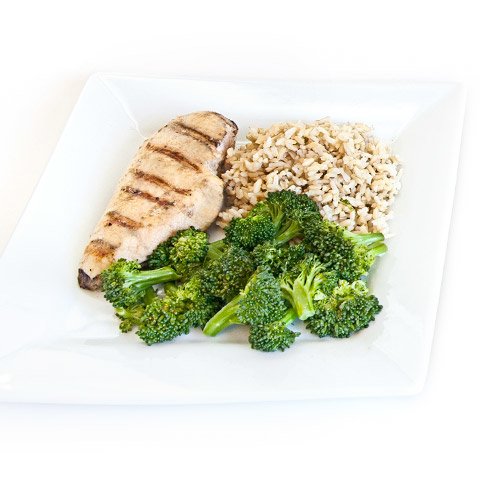
40/40/20
6 oz. chicken breast1 cup chopped broccoli, steamed
1 cup long-grain brown rice
Total:
Calories: 419
Fat 6.5 g
Carbs 45 g
Protein 45 g
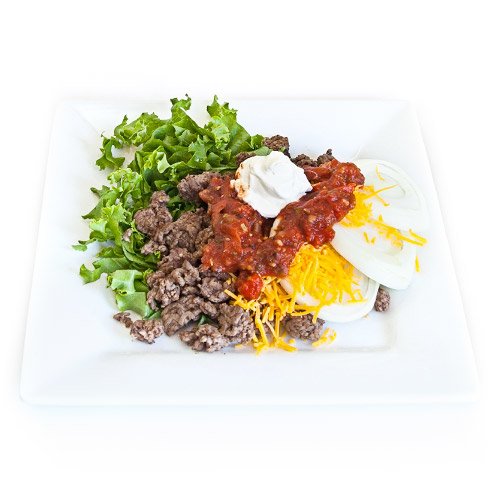
30/20/50
5 oz. 95/5 ground beef1 tbsp extra-virgin olive oil
1/2 cup chopped onion
1 cup shredded lettuce
2-3 tbsp fresh tomato salsa
1/4 shredded cheddar
1 tbsp sour cream
Total:
Calories 591
Fat 36.6 g
Carbs 14.5 g
Protein 51 g
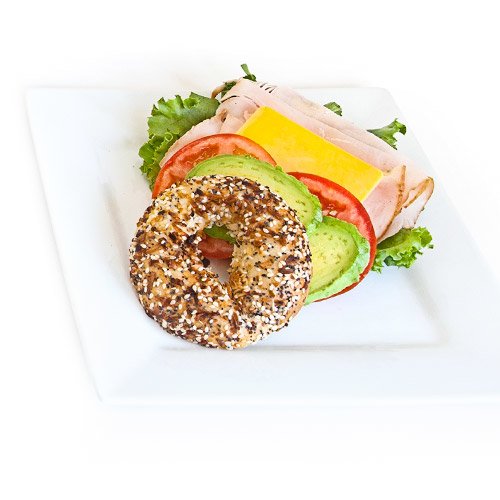
20/50/30
1 "everything" bagel4 oz. sliced turkey
2 slices tomato
1 lettuce leaf
1 slice cheddar cheese
1 tsp mustard
2 slices avocado
Total:
Calories 632
Fat 20 g
Carbs 70.4 g
Protein 42.5 g
Snack
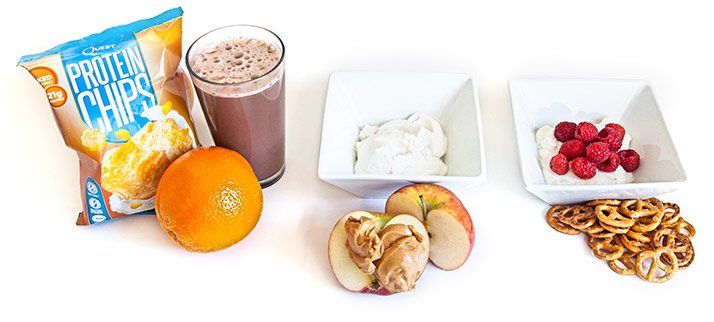
40/40/20
1 scoop whey protein
1 medium orange
30/20/50
1 medium apple
1 container 2% Greek yogurt
20/50/30
1/2 cup raspberries
1 oz. pretzels
Calories 476
Fat 4 g
Carbs 64 g
Protein 46 g
Calories 395
Fat 17 g
Carbs 37.5 g
Protein 23 g
Calories 248
Fat 4 g
Carbs 36 g
Protein 17 g
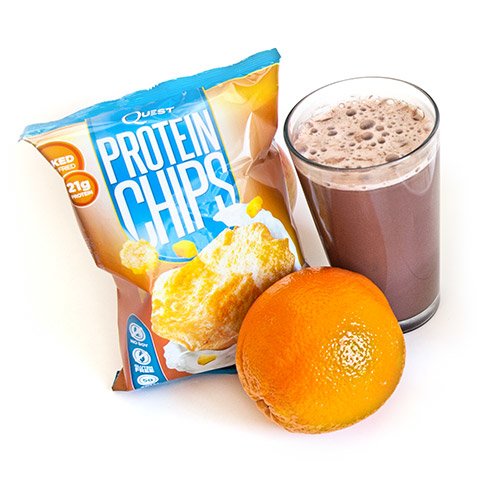
40/40/20
1 bag Quest sour cream and cheddar protein chips1 scoop whey protein
1 medium orange
Total:
Calories 476
Fat 4 g
Carbs 64 g
Protein 46 g
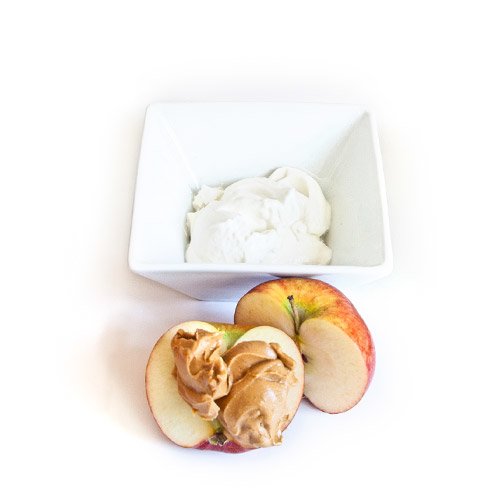
30/20/50
2 tbsp all-natural peanut butter1 medium apple
1 container 2% Greek yogurt
Total:
Calories 395
Fat 17 g
Carbs 37.5 g
Protein 23 g
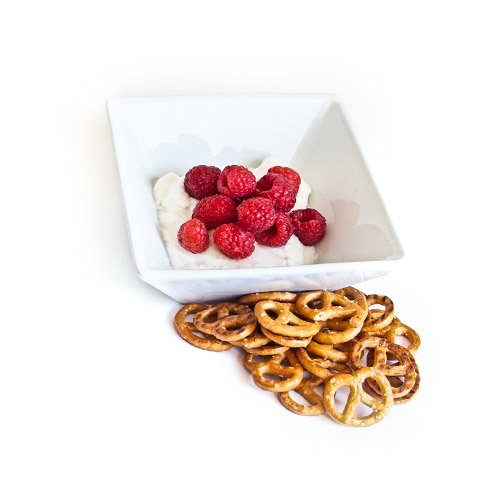
20/50/30
1 container Greek yogurt1/2 cup raspberries
1 oz. pretzels
Total:
Calories 248
Fat 4 g
Carbs 36 g
Protein 17 g
Dinner

40/40/20
1 medium sweet potato
1 pat butter
15 asparagus spears, chopped
1 cup sliced carrots
2 tbsp extra-virgin olive oil
30/20/50
1 cup green beans
2 pat butter
20/50/30
1 cup white rice, cooked
1/2 chopped bell pepper
Green onion, chopped
1/2 onion, chopped
1/2 cup mushrooms, sliced
2 tbsp soy sauce
1 egg
1 tbsp extra-virgin olive oil
Calories 676
Fat 28 g
Carbs 46 g
Protein 60 g
Calories 457
Fat 22 g
Carbs 27.5 g
Protein 37.3 g
Calories 609
Fat 21 g
Carbs 55 g
Protein 50 g
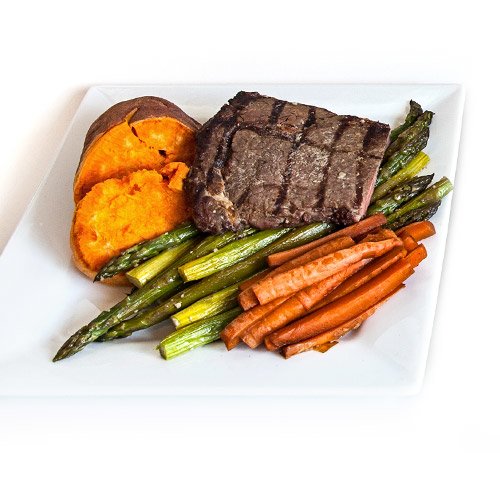
40/40/20
6 oz. steak1 medium sweet potato
1 pat butter
15 asparagus spears, chopped
1 cup sliced carrots
2 tbsp extra-virgin olive oil
Total:
Calories 676
Fat 28 g
Carbs 46 g
Protein 60 g
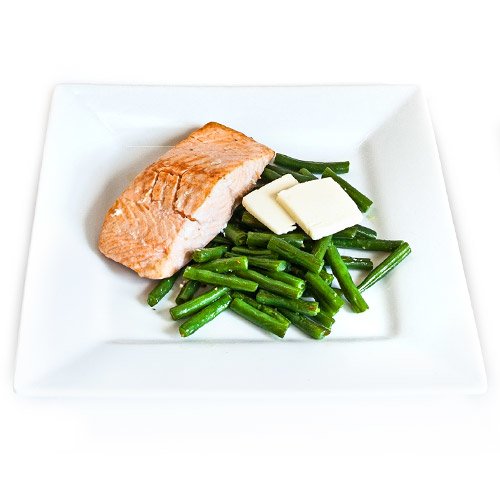
30/20/50
6 oz. Atlantic salmon1 cup green beans
2 pat butter
Total:
Calories 457
Fat 22 g
Carbs 27.5 g
Protein 37.3 g
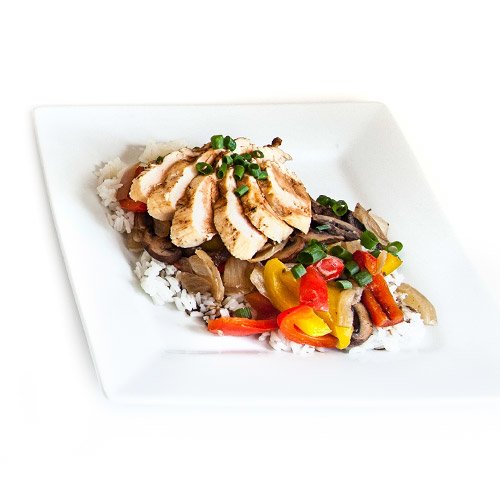
20/50/30
4 oz. chicken breast, sliced1 cup white rice, cooked
1/2 chopped bell pepper
Green onion, chopped
1/2 onion, chopped
1/2 cup mushrooms, sliced
2 tbsp soy sauce
1 egg
1 tbsp extra-virgin olive oil
Total:
Calories 609
Fat 21 g
Carbs 55 g
Protein 50 g
40/40/20: ALL MEALS
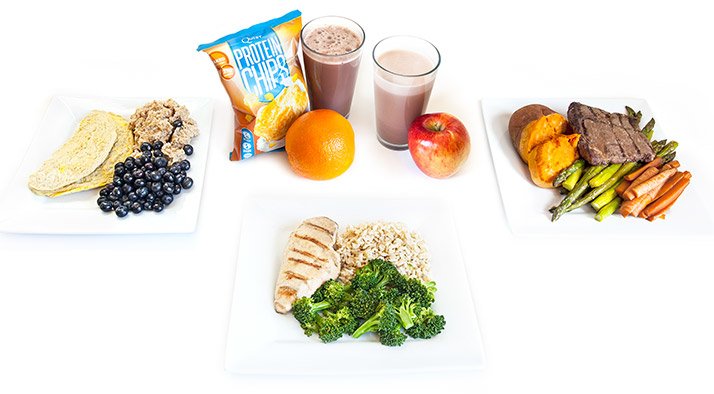
Calories 2,542
Fat 57.5 g
Carbs 265 g
Protein 241 g
Calories 2,500
Fat 55 g
Carbs 250 g
Protein 250 g
If you like eating, the traditional bodybuilding plan is great because you get to consume a pretty high volume of food. If you like a little more fat in your diet, though, you may want to consider a different option.
30/20/50: ALL MEALS
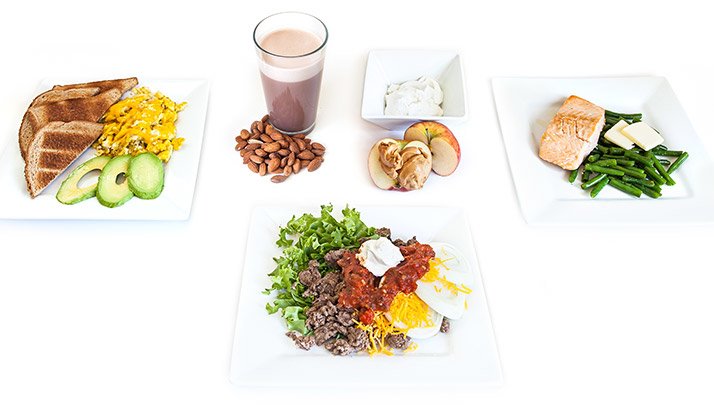
Calories 2,496
Fat 139 g
Carbs 120 g
Protein 183 g
Calories 2,500
Fat 135 g
Carbs 125 g
Protein 185 g
Because fat is so caloric, the volume of food you’d eat on this diet will feel small. However, fat is much more filling than carbohydrates, so you don’t have to eat as much to feel full.
20/50/30: ALL MEALS
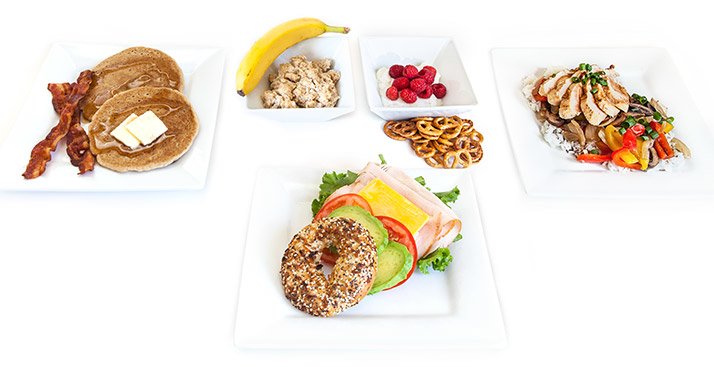
Calories 2,448
Fat 79 g
Carbs 301 g
Protein 134 g
Calories 2,500
Fat 85 g
Carbs 300 g
Protein 125 g
Although this macro ratio may not fit with your physique goals, a few alterations like making protein pancakes instead of regular ones, or choosing a wrap instead of a bagel, will still allow you to eat some of these yummy meals.
